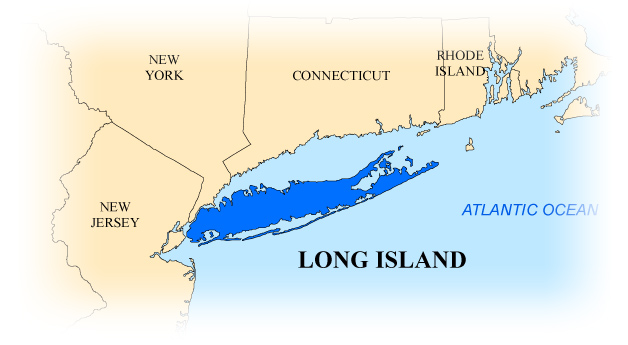RIVERHEAD Industrial Development Agency |
Call: 631.369.5129 |
About Long Island
Source: Long Island Convention & Visitors Bureau
Long Island is the largest island adjoining the continental United States, extending approximately 118 miles east-northeast from the mouth of the Hudson River. It is separated from the mainland on the north by the Long Island Sound and bounded by the Atlantic Ocean on the south and east. Twenty miles at its widest point, Long Island is composed of low plateaus on the north, longitudinal ridges of glacial moraine through the central parts of the island, and gently sloping plains to the south. The East End of the island is made up of two peninsular forks. The North Fork is approximately 28 miles long, the southern - terminating at Montauk Point - is about 44 miles in length. Peconic and Gardiners Bays separate the two forks and are where Shelter Island and Gardiners Island are located.

Totaling 1,377 square miles of land area, Long Island is divided into four counties: Kings (Brooklyn), Queens, Nassau, and Suffolk. Suffolk is the easternmost and by far the largest of the four, covering an expanse of 911 square miles. Following Suffolk is Nassau with 287 square miles, Queens County with 109, and Kings with 70 square miles, the westernmost County. Kings and Queens Counties are coterminous with the Boroughs of Brooklyn and Queens, which are within the jurisdiction of New York City.
Nassau and Suffolk County each has its share of pleasurable amenities that make Long Island such a desirable area to live, work and play. With 1,180 miles of shoreline, both counties have numerous beaches and other water sports recreational facilities which attract much tourism. This is particularly true of Suffolks eastern towns. Tourism and the influx of seasonal residents on the East End have a dramatic effect on both the population and the economy.
Source: Long Island Power Authority
